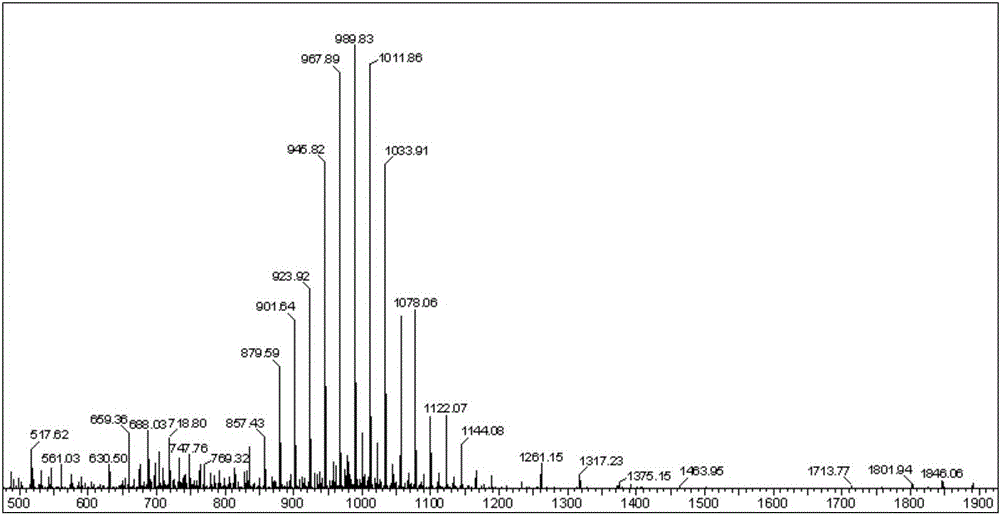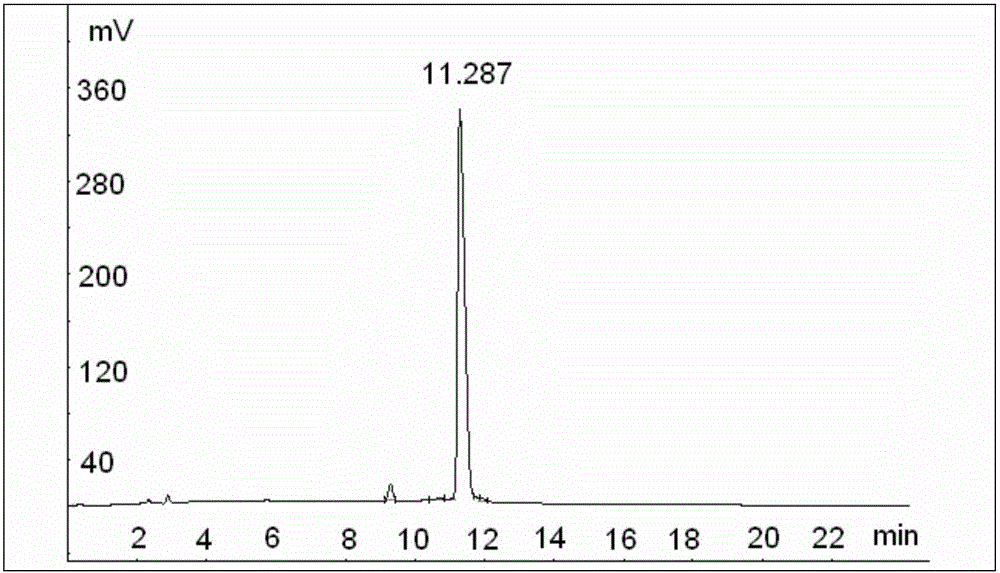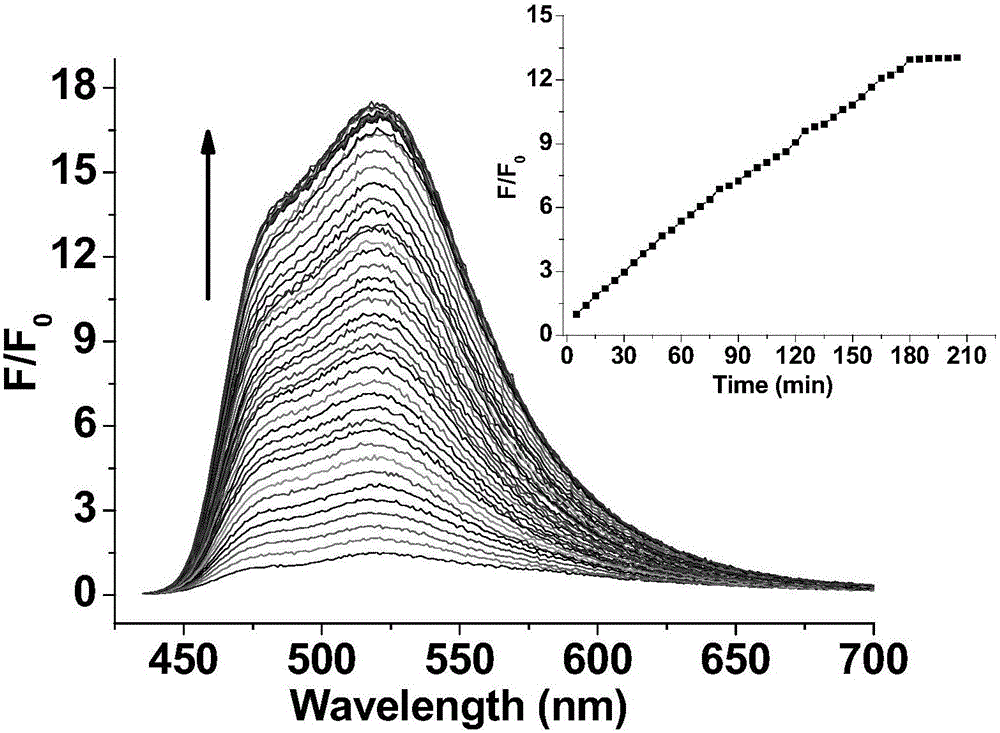Fluorescence resonance energy transfer probe, preparation method and application thereof
A fluorescence resonance energy and probe technology, applied in biochemical equipment and methods, chemical instruments and methods, luminescent materials, etc., can solve the problems of loss of surgical treatment, high price, and high rate of missed diagnosis
- Summary
- Abstract
- Description
- Claims
- Application Information
AI Technical Summary
Problems solved by technology
Method used
Image
Examples
Embodiment
[0025] 1 Materials and methods
[0026] 1.1 Cell lines and culture conditions
[0027] Human liver cancer cells 7402 and normal human liver cells LO-2 were purchased from the Shanghai Cell Bank of the Chinese Academy of Sciences, using RPMI-1640 medium containing 10% FBS and penicillin / streptomycin (penicillin 100 U / mL, streptomycin 100 μg / mL), At 37°C, 5% CO 2 cultured in a cell culture incubator.
[0028] 1.2 Main reagents and materials
[0029] 4-(N,N-diethylamino)salicylaldehyde, 1-(3-dimethylaminopropyl)-3-ethylcarbodiimide hydrochloride (EDC·HCl), N-hydroxysuccinyl Imine (NHS), N,N-dimethylformamide (DMF), petroleum ether (60-90°C), tetrahydrofuran (THF), chromatographically pure dimethyl sulfoxide (DMSO), etc. The rest of the chemical reagents used were of analytical grade. DMEM medium, fetal bovine serum (FBS), trypsin, penicillin, streptomycin, etc. are commercially available.
[0030] 1.3 Main Instruments
[0031] Ultraviolet-visible spectrophotometer (UV-2550...
PUM
 Login to View More
Login to View More Abstract
Description
Claims
Application Information
 Login to View More
Login to View More - R&D
- Intellectual Property
- Life Sciences
- Materials
- Tech Scout
- Unparalleled Data Quality
- Higher Quality Content
- 60% Fewer Hallucinations
Browse by: Latest US Patents, China's latest patents, Technical Efficacy Thesaurus, Application Domain, Technology Topic, Popular Technical Reports.
© 2025 PatSnap. All rights reserved.Legal|Privacy policy|Modern Slavery Act Transparency Statement|Sitemap|About US| Contact US: help@patsnap.com



